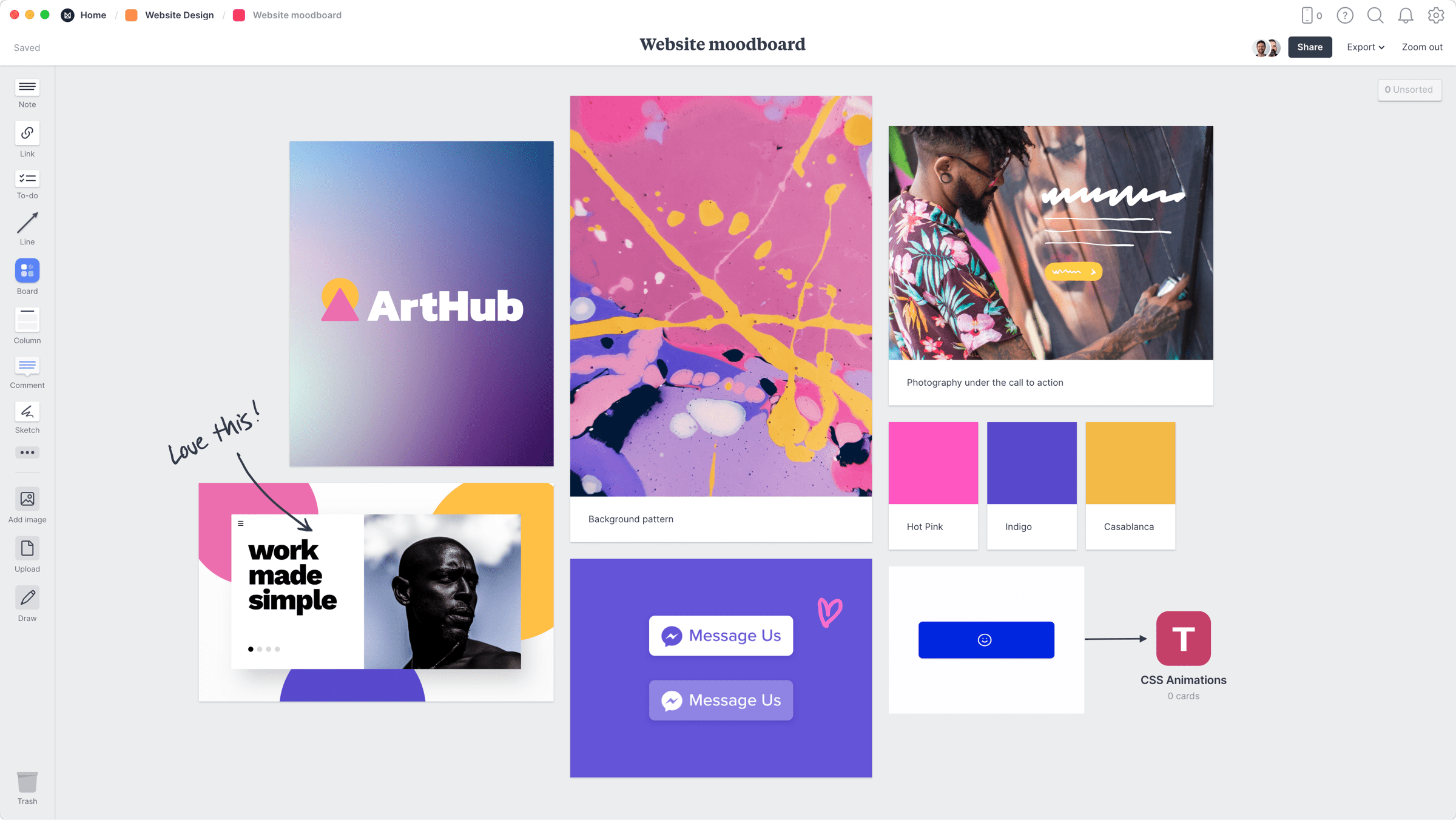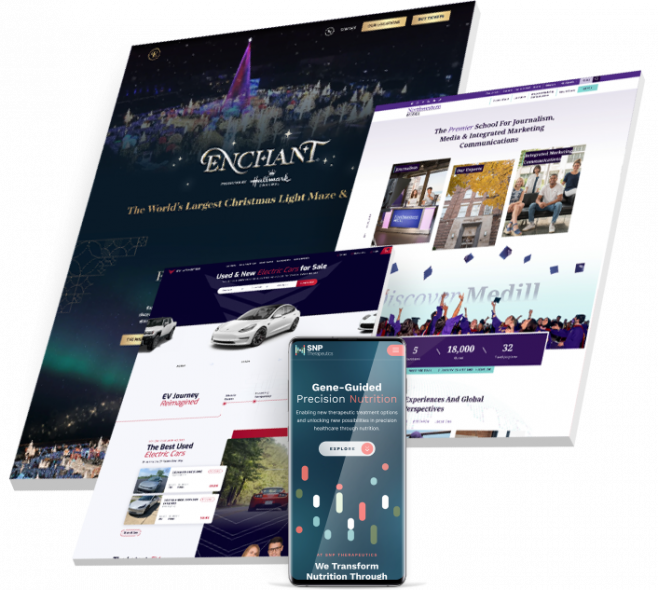The Impact of Receptive Attributes on Your Website Design Success
The Impact of Receptive Attributes on Your Website Design Success
Blog Article
Trick Methods for Applying User-Centric Web Site Design to Boost Involvement
When thinking about the implementation of user-centric web site layout, certain approaches are important in increasing involvement. Extensive research right into customer needs and choices develops the structure, guiding the development of customer personalities to notify layout choices. User-friendly navigating and receptive user interfaces are important, ensuring simplicity of accessibility across all tools. Individualizing content enhances individual contentment, and durable access features widen reach. These techniques collectively promote a more significant online experience. How do these aspects come with each other successfully, and what functional steps can be taken to guarantee their successful integration?
Comprehending Customer Needs
Comprehending individual demands is an essential step in the procedure of user-centric site design. This technique makes sure that the site straightens with the expectations and needs of its target market, ultimately leading to enhanced customer contentment and engagement. The initial stage involves carrying out detailed research to collect understandings right into customer behaviors, choices, and pain factors. Methods such as studies, interviews, and individual testing can offer valuable qualitative and measurable data regarding exactly how users engage with the web site.
Assessing this data permits developers to produce in-depth customer identities that represent the various sectors of the target audience. These characters help educate style decisions by highlighting details customer goals and obstacles, guiding the development of features that address these needs efficiently. Comprehending the context in which users operate-- such as their setting, gadget preferences, and time constraints-- can further refine the layout technique.
Empathy plays an essential role in this procedure, allowing designers to see the internet site from the individual's perspective. By prioritizing customer requirements, the layout procedure comes to be a lot more concentrated, protecting against the inclusion of unnecessary elements that could clutter the individual experience. Inevitably, a deep understanding of user demands contributes in crafting a web site that is both useful and meaningful.
Designing Instinctive Navigating
Having actually developed a detailed understanding of customer needs, the following action in user-centric web site design involves creating user-friendly navigating. Efficient navigation is fundamental to customer contentment, affecting exactly how conveniently users can locate information and complete tasks. To achieve intuitive navigating, developers need to focus on simpleness and clarity, ensuring that the navigation structure is sensible and consistent throughout the site.
Organizing web content into a clear pecking order is critical. Website Design. Making use of acquainted tags and icons can guide individuals easily, reducing cognitive lots and enhancing the general customer experience. A well-designed navigating bar should be prominently put, enabling customers to identify their existing place and conveniently discover other sections of the site
It is additionally crucial to incorporate interactive elements such as breadcrumbs and search functionalities to aid users in navigating complex sites. These functions provide additional pathways and improve the access of material, dealing with different individual choices and actions.
Checking navigating with genuine individuals is necessary to determine potential discomfort factors and ensure functionality aligns with customer assumptions. Normal comments loops and repetitive improvements can help keep an efficient navigation system that adjusts to advancing user demands, eventually boosting involvement and complete satisfaction.
Creating Receptive Interfaces
Usually, developing responsive user interfaces is an essential element of modern-day web design, ensuring that internet sites are easily accessible and functional throughout a wide variety of gadgets and display sizes (Website Design). This flexibility is critical in a landscape where individuals access web content through smartphones, laptops, desktop computers, and tablet computers, each with varying resolutions and orientations. The main goal of receptive style is to improve individual experience by preserving ideal readability and usability, no matter of the gadget utilized
To attain this, web designers use adaptable grid designs, liquid pictures, and CSS media inquiries. Adaptable grids allow website elements to resize proportionally, while liquid images make sure visuals range suitably without losing quality. Media inquiries play a crucial duty by using different styles based upon the tool's attributes, such as width, elevation, and alignment, thus tailoring the layout to the user's screen.
Furthermore, responsive user interfaces add to boosted search engine optimization (SEARCH ENGINE OPTIMIZATION) by supplying a smooth customer experience, which in turn can reduce bounce prices and increase site interaction. In recap, taking on responsive layout is not simply a technological factor to consider yet an important technique for fostering a user-centric web atmosphere that satisfies the demands of a diverse audience.

Customizing Web Content Experience
Individualizing material experience is a critical component of user-centric site style that includes tailoring content to meet the unique preferences and behaviors of individual customers. This approach not only improves individual satisfaction however also cultivates much deeper engagement, as visitors are most likely to interact with web content that resonates with their needs and passions. By leveraging data analytics and individual responses, services can identify patterns and patterns that notify the modification of internet view publisher site content.
Incorporating personalization strategies can range from simple adjustments, such as advising items based on surfing background, to much more sophisticated strategies like dynamic material that adjusts in real-time to an individual's communications. For instance, personalized touchdown web pages can dramatically boost conversion rates by giving individuals with relevant details and provides that straighten with their previous activities and choices.
In addition, utilizing artificial knowledge and artificial intelligence can further fine-tune content customization by continuously picking up from user behaviors and adjusting to emerging fads. This not just enhances the individual's trip yet also builds brand name commitment, as consumers feel comprehended and valued. Ultimately, customizing the material experience is an essential technique for businesses aiming to produce a more interesting and purposeful interaction with their audience.
Enhancing Access Attributes
Enhancing accessibility features is an essential element of user-centric web site layout, making certain that electronic web content is useful by every person, consisting of people with handicaps. This approach not just abides with lawful criteria such as the Americans with Disabilities Act (ADA) and the Internet Web Content Access Standards (WCAG) yet additionally significantly widens a website's audience reach. By integrating attributes like key-board navigating, display reader compatibility, and alternative text for images, sites come to be more inclusive, supplying a smooth experience for customers with visual, auditory, or motor disabilities.
Including receptive design components is crucial, helping with gain access to on different gadgets and screen sizes, thereby accommodating users with various choices and requirements. Additionally, comparison ratios and text dimension modifications can improve readability for individuals with visual obstacles. Giving clear and succinct you could check here web content structure, such as headings and checklists, aids comprehension and navigating, especially for individuals with cognitive handicaps.
Normal accessibility audits need to be carried out to recognize and correct possible barriers, making sure continued compliance and use. By prioritizing access, organizations not only foster inclusivity but likewise enhance total individual engagement and satisfaction, eventually driving greater conversion rates and strengthening brand commitment.

Final Thought
Integrating user-centric style techniques substantially boosts web site interaction by focusing on the requirements and choices of individuals. Comprehensive research assists in the development of user personas, directing targeted style choices. Intuitive navigating and receptive user interfaces improve use and availability throughout visit this page devices. Customizing web content based on user habits raises fulfillment, while robust availability features increase audience reach. Collectively, these approaches produce a meaningful on-line experience, fostering much deeper interaction and communication with the site.
Comprehensive research into user needs and preferences forms the foundation, guiding the production of customer characters to inform design choices. Strategies such as studies, meetings, and customer screening can provide useful qualitative and measurable information about how users connect with the internet site.
By focusing on individual requirements, the style process ends up being much more focused, preventing the inclusion of unneeded components that might clutter the individual experience. Effective navigation is basic to user fulfillment, affecting just how quickly users can find details and total tasks. The usage of acquainted tags and symbols can lead customers easily, minimizing cognitive lots and boosting the overall individual experience.
Report this page